
It saddens me when we see old dogs and cats, and people just accept that they’re going to limp. And that they’re going to be stiff. And that’s just the way it is.
Lisa Ruthig has the mind of a scientist but the heart of a healer.
A former microbiologist, Ruthig doesn’t simply accept things at face value. When her dog Fergus was hit by a car as a puppy and had to have a steel plate inserted in his leg, she didn’t accept the idea he was destined for a life of pain.
Instead, she looked for something to help him and, in the process, changed her own life.
What she found was the Bancroft School of Animal and Equine Massage.
Hooked after a couple of classes, she quit her job as the head of information systems at a large garden center and the rest, as they say, is history.
Pain Doesn’t Have to Be Inevitable

When speaking with Ruthig, she’s at her most emphatic when talking about standing against pain.
“It saddens me when we see old dogs and cats, and people just accept that they’re going to limp,” she says. “And that they’re going to be stiff. And that’s just the way it is.
There’s so much more we can do for them.”
Each animal she sees is a puzzle for her to figure out.
The animal might already be on pain medication, but is there more she can do?
Or, maybe, the animal can’t take medicine because it has liver problems; what massage techniques can she use to take the place of pain killers? And, can she work with other practitioners (acupuncturists, chiropractors, etc.) to develop a holistic treatment?
Animal Massage: A Holistic Approach
When Ruthig first began her search for something to help her dog, she could have gone in a number of directions, including becoming a vet or vet tech.
But she didn’t want to make the animals she worked with uncomfortable or afraid.
While the scientist side of her appreciates what vets bring to the table — and she won’t work on any animal that isn’t also seeing a vet — her healer side needs something more holistic.
Working as an animal massage practitioner positions her as part of a larger community dedicated to the pet well-being: groomers, dog walkers, pet sitters, acupuncturists, trainers.
“It’s nice to have a community of people that can help your pets… Some of these cases are really complex so it’s great to have a more total approach.”
Find out more about the benefits of chiropractic treatment for dogs and cats.
Two-Way Communication
Ruthig also wants the animals she works with to have a “voice” in their treatment.
The first part of that is having the time to learn each animal’s specific body language and how it responds to both discomfort and pleasure. In simpler terms, she learns how each animal signals whether its happy with what she’s doing or unhappy. This enables her to stop what she’s doing based on their feedback.
“They learn they’re in control of the session and they can stop me with a tiny signal rather than have to bite me or scratch me, which is safer for me but also helps build our relationship so they learn to trust me.”
Trust is important with massage, because, as anyone who’s ever had a deep tissue massage knows, sometimes it’s painful. And that means, she needs the animal’s buy-in to do her job.
One trick of the trade? Find something that feels really good to them and revert to that at the first sign you’re causing discomfort. Over time, they let you do the painful thing a little longer because they know you’ll return to the “good” thing.
Extraordinary Results
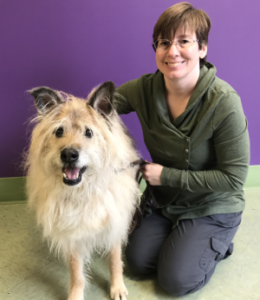
Ruthig’s faith in massage has been rewarded time and time again, most notably with Fergus who lived to almost 17. Until the day he died, he was still using the stairs without any problems.
These days Ruthig has two terrier mixes: Smitty and Dargo. Smitty is 15 and thanks to a lifetime of massage from Ruthig he’s in great shape and fully capable of jumping on the bed.
But Ruthig’s pets aren’t the only examples of extraordinary success.
Baby Kitty is an older cat with back and hip arthritis, who, by the time he came to Ruthig, had pretty much stopped moving. His veterinarian gave his owner two choices: euthanasia or try massage as a last-ditch effort.
After a series of massages combined with laser treatments, Baby Kitty was back to climbing his cat tree.
A more recent patient is Bella, a 12-year-old Shih-Tzu mix. When she first came to Ruthig last year, Bella had such severe arthritis in one of her legs, she couldn’t put any weight on it at all.
In the words of Bella’s mom, “When Bella came in for her massage, she could not put any weight on one of her legs due to advanced arthritis. At the end of the first massage, she was already able to put weight on all of her legs. Bella has now had 3 massages and she is walking much better and wants to play again.”
A Lucky Coincidence
Though it was Fergus’ accident that led Ruthig down the path that led her to animal massage, she was already on a search for her purpose.
After googling how to help dogs with arthritis, she “followed the rabbit hole” to how to train for dog massage and that’s how she found Bancroft, which coincidentally happened to be located near where she lived.
The program she enrolled in was right up her alley. Her first classes were in anatomy and physiology, subjects which suited her scientific nature to a T. Then they started the hands-on stuff and the healer in her was all in.
“I took the program to help him, but I was also tiring of the work I was doing, and I was open to changing careers,” Ruthig told Keeping It Pawsome. “Once I was in the program, I realized this was exactly what I wanted to do with my life.”
See how another scientist at heart went from physics to pet food.
Gateway Practice
Prior to her education in animal massage, Ruthig had had little interest in alternative medicine.
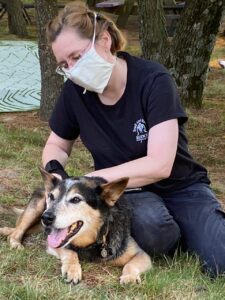
“I was a science girl,” she said, but admits the more she learned, the more she discovered how much science is behind massage.
While scientists aren’t clear on the exact underlying mechanism that enables massage to work, the general thought is that it sends “competing sensations to the brain,” that essentially “turn down” the pain signals.
“I can massage dogs with post-surgical pain for 15 minutes, and 90% of them will lie down and fall asleep without added medication,” she says.
New research is looking at a massage stroke called compression to fight muscle atrophy, while other studies are looking at how using passive range of motion can improve function in arthritic joints (like it did with Bella the Shih-Tzu).
Massage led Ruthig to Reiki, which she practices on herself and has incorporated into her practice.
She’s also started teaching. Originally, she added teaching as a way of making some extra money. But as with learning massage in the first place, it quickly became something else.
“It turned out I loved it. Teaching is wonderful and you increase your impact exponentially because I’m training other people to go out and do this, so that’s just more animals that are going to be helped.”
You Do What Now?
From her first days as a, animal massage practitioner, Ruthig has had to work to educate pet parents on the benefits of massage.
Her friends found it amusing and her mom was disappointed.
“I can rub my own dog,” was a common thing she heard from people.
Today, Ruthig’s friends all ask her to help their dogs and her mom tells her how proud she is of her for helping animals.
If you’re interested in hiring a massage practitioner for your dog or cat, Ruthig has a few words of advice.
1. Ask to see their credentials. Being board certified is the top level of certification but it’s not available in every state. Check Nbcaam.org to see if there’s a board-certified massage practitioner near you.
2. If they’re not board-certified, ask about their education. You want to make sure they had, at least, 200 hours of training that included anatomy and physiology, as well as hands-on training.
4 Comments
Comments are closed.

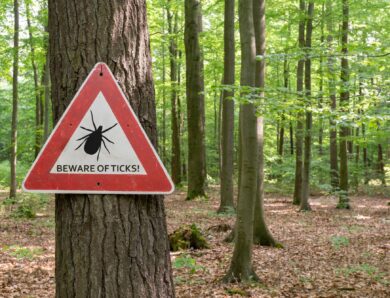
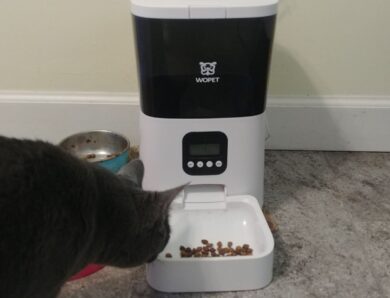
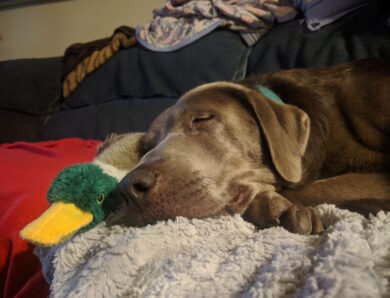


Our Corgi, Maggie is 8 1/2 years old so this article is great timing. I’m sure with Maggie we should check into this asap as Corgis are known to have hip issues. Very sad to watch them age so glad to read we have more options for her. Thank you for this post.
My cat, Buddy is 11 years old and will soon be a senior cat. Thanks for the information! I’m glad that there are more options out there.
This is one of those things that makes so much sense, and yet most people would never think of it. Massage is so beneficial for humans…of course it would be for pets too!
Thank you got this wonderful article. I have two senior dogs. My chihuahua, Charlie, has joint issues. He’s on vitamins for it, but he could definitely benefit from massage.🙏❤️🙏